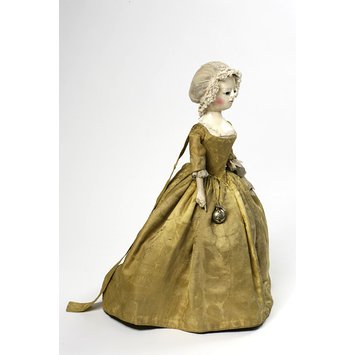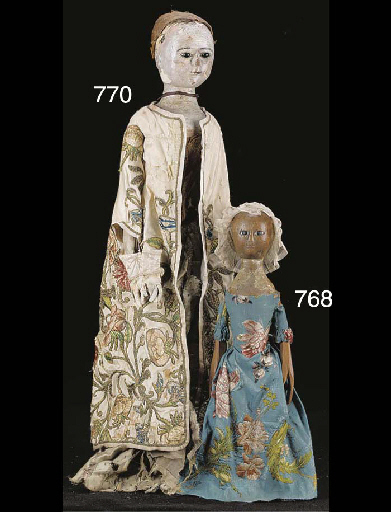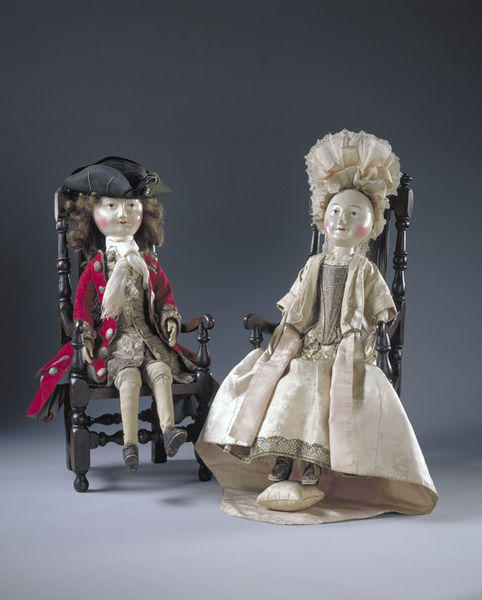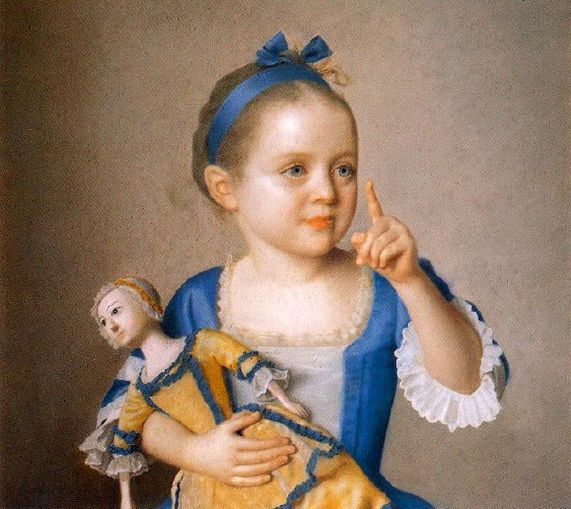 |
| Henry Raeburn, The Skating Minister, c 1790s |

Sunday, December 25, 2011
Merry Christmas
Saturday, December 24, 2011
Children's Dolls
In this season of shopping and gift wrapping and endless commercials my mind begins to wander to the days when children didn't have whole room dedicated to their toys. If a child was lucky enough to have a doll in the 18th century, only one would suffice. What's more amazing is when these old and beloved toys survive hundreds of years and multiple children's love.
For more images of dolls, the website 18th Century Notebook has amassed a fantastic online collection of these surviving toys.
 |
| Williamsburg |
 |
| V&A, 1740s |
 |
| Deerfield Memorial Hall, c 1770 |
 |
| Museum of London, 1766-70 |
 |
| Christie's |
 |
| Bowes Museum, c 1735 |
 |
| V&A, c 1690-1710 |
 |
| The Met, Late 18th C |
For more images of dolls, the website 18th Century Notebook has amassed a fantastic online collection of these surviving toys.
Wednesday, December 21, 2011
TickTock
Nowadays we tend to have some sort of clock in every room of the house. If we don't have a clock usually we have a watch or, of course the ever-attached mobile phone. It's hard to imagine not having access to time. Most Georgians felt the same way too. In the previous century, a little over a quarter of households had a clock but by the 18th century that number skyrocketed to most everybody.
Well, perhaps "everybody" is not the best term to use. Strangely, clocks were one of those gadgets that men couldn't keep their hands off of and women couldn't really care less about. Somewhat ironic, considering the fancy rococo clocks we commonly see in museums! Strangely, most clocks were in the kitchen so as to prevent those cookies and tarts from being burnt. So despite the clock being seen as something incredibly masculine (even pocket watches were rarely used by women) women still managed to find more use for them than showing off their savvy knowledge of technology.
Well, perhaps "everybody" is not the best term to use. Strangely, clocks were one of those gadgets that men couldn't keep their hands off of and women couldn't really care less about. Somewhat ironic, considering the fancy rococo clocks we commonly see in museums! Strangely, most clocks were in the kitchen so as to prevent those cookies and tarts from being burnt. So despite the clock being seen as something incredibly masculine (even pocket watches were rarely used by women) women still managed to find more use for them than showing off their savvy knowledge of technology.
Friday, December 9, 2011
Book Review: Sense and Sensibility Bath Bicentenary Edition
It has been a year of Sense and Sensibility for me. Ever since I took part in Austenprose's Bicentenary Challenge at the beginning of the year I have been exposed to many different and colourful versions of this literary classic. I have been lucky enough to end this special year with a brand new edition of the book, the Bath Bicentenary Edition.
The story is the same classic we have grown to love. A tale of two sisters dealing with family hardships as well as the toils of love all at once. The introduction by Katharine Reeve is eye-opening in terms of just how eighteenth century the book actually is. While it may not have been published until 1811, the manuscript for Sense and Sensibility, or Elinor and Marianne, was written fifteen years before, around the year 1795. It contained an underlying commentary (or even criticism) on the eighteenth century fashion for sensibility which by the turn of the new century was slowly losing steam. Yet the book was originally written in the style associated with the sentimental novel, in epistolary form. Luckily, Jane scrapped that idea to trade it in for the lovely version we have today.
And what a lovely version we are blessed with 200 years later!
The Bicentary edition delivers all sorts of the gooey Austen prettiness that Janites crave. Now that I work in an office full of Janites I had to keep slapping their hands away from this book! Why? Well firstly, the book is a hardcover edition of Sense and Sensibility. Within the covers will you not only find Austen's classic tale but the beautiful colour illustrations of Niroot Puttapipat who depicts the characters in the popular fashions of 1795. Does Puttapipat draw a hot Colonel Brandon? You bet your sweet bonnet he does! What I especially like was that aside from the large colour plates that are dispersed throughout the book, there are also smaller silhouette illustrations, adding that lovely essence of the Regency period to a Regency book. For a preview of the illustrations I have been gushing about, check out this video.
The book is out now, just in time for holiday shopping. It would make a fabulous present for any Janite in your life, even if that Janite is you!
The story is the same classic we have grown to love. A tale of two sisters dealing with family hardships as well as the toils of love all at once. The introduction by Katharine Reeve is eye-opening in terms of just how eighteenth century the book actually is. While it may not have been published until 1811, the manuscript for Sense and Sensibility, or Elinor and Marianne, was written fifteen years before, around the year 1795. It contained an underlying commentary (or even criticism) on the eighteenth century fashion for sensibility which by the turn of the new century was slowly losing steam. Yet the book was originally written in the style associated with the sentimental novel, in epistolary form. Luckily, Jane scrapped that idea to trade it in for the lovely version we have today.
And what a lovely version we are blessed with 200 years later!
The Bicentary edition delivers all sorts of the gooey Austen prettiness that Janites crave. Now that I work in an office full of Janites I had to keep slapping their hands away from this book! Why? Well firstly, the book is a hardcover edition of Sense and Sensibility. Within the covers will you not only find Austen's classic tale but the beautiful colour illustrations of Niroot Puttapipat who depicts the characters in the popular fashions of 1795. Does Puttapipat draw a hot Colonel Brandon? You bet your sweet bonnet he does! What I especially like was that aside from the large colour plates that are dispersed throughout the book, there are also smaller silhouette illustrations, adding that lovely essence of the Regency period to a Regency book. For a preview of the illustrations I have been gushing about, check out this video.
The book is out now, just in time for holiday shopping. It would make a fabulous present for any Janite in your life, even if that Janite is you!
Monday, December 5, 2011
Subscribe to:
Posts (Atom)



